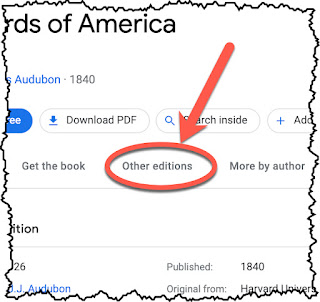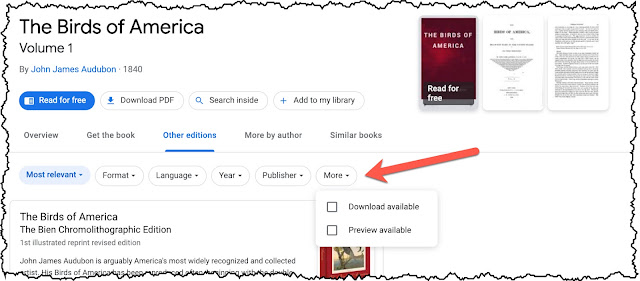How to find: News & Breaking Events: Keeping track of your news sources (part 2)
Foreword: This is part two of our chapter on finding news (and late-breaking information). Mario Callegaro and I have been writing this to let you know some of the best practices in how to find online news. Here we talk about that important step--keeping track of the sources you find useful!_____________________________________________________________
Key tip: Keep a list of your favorite sources
There are millions of news sites—how do you deal with them all?
Answer: People usually create their own lists of news sources and sites and apps that they visit to follow breaking events.
Most news sites have email subscriptions that can deliver a regular stream of news to you (in addition to you visiting the site). Bear in mind what your preferred type of news is. How do you want to consume your news? There are news websites, news email lists, news apps, you can subscribe to video news services, podcasts, vlogs—you name it, and it’s out there.
Often, frequent searchers will have subscriptions (which we encourage) to the sites they visit during their news reading. Many news sites also have email feeds that you can set up to see the breaking stories that you’d like to track. Keeping track of all that in your head is impossible. We recommend making a list of your top sites (a Google Doc is a simple way to do that).
What do you put into your Doc list of news? Here are the key kinds of sources:
1. News providers
There are lots of news providers, many with their own apps: Cleveland Plain Dealer; Times of London; Boston Globe; El Universal (Mexico); El Pais (Spain); Dainik Jagran (India); etc etc etc... Find one that’s close to you and subscribe.
2. News providers with videos
Note that many news outlets have video streams as well (see, for instance New York Times Videos or Washington Post videos), and of course your local television news source usually has a YouTube channel (or some other kind of way to pump out news videos).
In addition to these, many news providers also have YouTube channels that don’t carry exactly the same content. (Examples: Washington Post YouTube channel.)
And of course, some news providers are primarily video creators and only have written forms as alternative ways of presenting information. (Think about ABC, CBS, NBC in the US, or BBC World News in the UK.)
3. Aggregators
A news aggregator collects news from multiple sources into a simple to use format. They have their own news scanning and ranking algorithms. This is really a collection of stories pulled together from other places:
Apple News (subscription required)
Google Discover — news aggregation on your mobile device that’s tailored by your searches and expressed interests
4. Wikipedia
In addition to all of the normal news sources, the Wiki-world has its own set of resources to tap into. If you haven't seen these, it's worth a look to get another perspective on the news and what resources are available.
List of news sources worldwide - lists ONLY news resources, organized geographically. This isn’t a list of all newspapers, just websites with news coverage.
List of newspapers - geographically organized. Fairly complete. (Includes lists of defunct newspapers, not all of which are still online, but still readable via the Internet Archive.)
List of TV news - global, geographically organized.
5. Realtime news sources
While the global news cycle is increasingly nearly real-time, sometimes you might want to get up-to-the-second news. This is a common need during disasters and calamities of all kinds. (Most recently, Dan was monitoring the wildfires in California and the follow-on effects of the smoke that drifted everywhere.)
In these cases, you’ll want to consider real-time sources like Twitter, WhatsApp, Telegram, and Facebook. The one thing to remember in all of these real-time sources is that you probably do NOT want to watch the raw stream of updates from random posters. Disasters often create a flood of incorrect and misinformation: be very cautious. We recommend that you find authoritative sources that have a good reputation beforehand. Many official government sites will provide official feeds. The drawback of these sources is that they’re often slow and will give the official story. IF you can find a reliable news provider ahead of time (e.g., your local newspaper or on-the-spot news provider, such as the BBC), you’ll want to follow their various channels.
If you’re interested in where people get their news, the Pew organization released the results of their survey about news sources from social media in 2021. Bottom line: Less than 50% of Americans get news from social media, and of those that do, less than 10% of Americans say they regularly get news from Reddit (7%), TikTok (6%), LinkedIn (4%), Snapchat (4%), WhatsApp (3%) or Twitch (1%). At the same time, about 31% read Facebook for news, while 22% turn to YouTube.
WAYS TO HOLD ONTO YOUR NEWS LINKS:
Bookmarks - you know, you can use the regular old bookmark manager in your browser. (Bookmarks in Chrome; Bookmarks in Firefox)
URL managers (aka Bookmark Managers) These are, basically, fancy bookmark managers; often run as a separate app on your phone. You can set up a tab with just the news feeds you want to check.
Just plain notes. This is what I do—I have a document with the links I want to check every so often. I also have a little note next to the link with features (e.g., editorial writers that I like, or special sections and topics). You can use Google Docs or Microsoft Word. A key question for notes: Should you include the entire URL in plain text? I would say yes, just in case something bad happens and your links go bad. With the full URL you can still get to the destination. (Why do I keep my news links in a plain text file? Answer: So I can pick up my links and move to another kind of browser or computer system without any hassle. Moving a single file (that has exactly the information you want) is much easier than figuring out how to export bookmarks from one browser and maybe importing them into another kind of browser.)
NEWS FLASH: Links go bad. You should know this by now: note that links (especially to news stories) often go stale. When that happens, your news link won’t work any more. News organizations will sometimes move their content around breaking a formerly working link. Sometimes that content gets put behind a paywall and you have to pay for it.
So… Save what you care about: IF the news content is important to you (e.g., critical to some research you’re doing), consider saving the entire web page WITH the URL with time-date stamp by saving it as a PDF (here’s how) or as an MHT (web-page complete, here’s how) file. I can’t tell you how often I’ve lost valuable bits of information because a link went bad or a site disappeared. If it matters, save it. Storage is cheap—pulled-out hair is painful.
Simplifying reading of news (or other web pages): You probably have noticed that reading news pages is often an annoying proposition because some news sites carpet-bomb their pages with ads and flashing doodads of every possible kind. You can use reader mode to simplify your reading of the page. If you find yourself annoyed by all of the visual clutter, here’s how to activate the Reader Mode for your browser: Chrome, Safari, Firefox, Edge.
As an example, here’s a side-by-side comparison of an article from the NYTimes in Reader mode vs. in full-view mode--they're very different presentations:
You can control your news feeds and the way in which you read. Use Reader mode if you find yourself getting distracted while doing your research.
But however you do it, be sure the content is believable. We’ll show you how in the next installment of “How to find anything,” the News edition, part 3.
Search on!






















